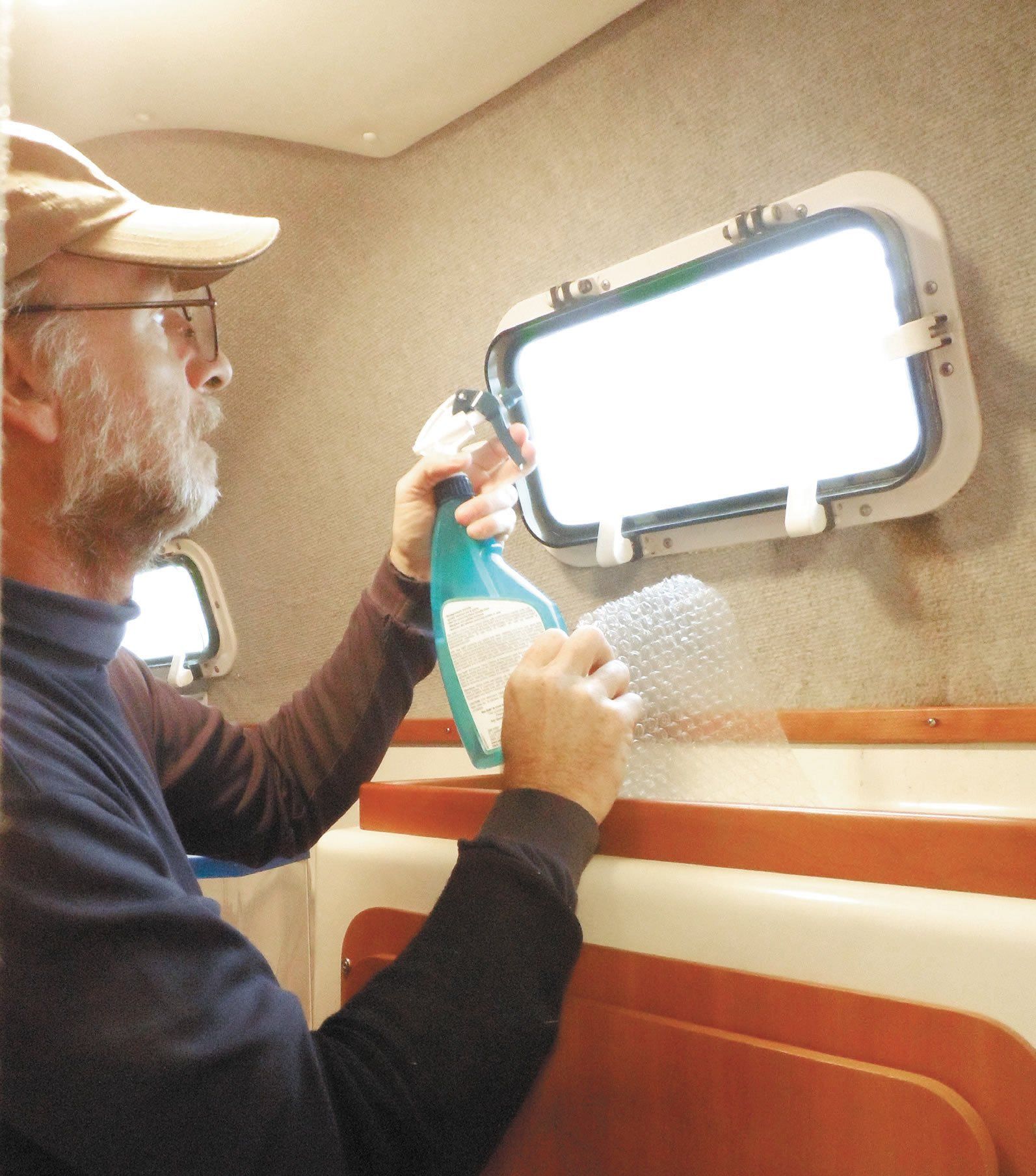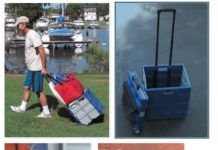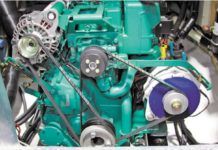Test Compares Insulation Below Waterline
First, we set up an R-value test rig, exposing sample materials to a temperature difference and measuring the difference in heat flow (see adjacent photo). The main thing to take away from this is that small areas of very poor insulation-windows or non-cored laminate-will benefit best from insulation.
How to Measure Boat Humidity: Psychrometric Charts Do It Right
Insulation is a greater energy-saving expedient; if our heater or air conditioner is undersized, fixing drafts, shading or insulating windows, and insulating non-cored laminate are all ways to reduce the thermal load. For boaters, however, that is only half of the equation.
Simple Steps Will Keep Salt Out of the System
Depending on the collection area and the sailing, salt can be a primary problem. Spray falls and dries, layer after layer, until the decks hold enough salt to foul a considerable flow of water. The solution? Wash the deck with seawater before the rain comes. Squeegee off as much as practical or towel dry, and common sense dictates this is best done when at sea and must be done away from red tides. We tested the run-off from the top after scrubbing with seawater, allowing to dry, and then spraying with tap water equivalent to 1/10-inch of rain (see results in table below). In addition to taste, seawater contains significant sulfate levels, which combined with bacteria in the tank under anaerobic conditions, can lead to sulfurous water; sailors notice this when a seawater flush is used for the head, but allowed to become stagnant for a few days; the first flush will smell.
Winterizing Wisdom from the Chemistry Lab
Each winter sailors must tackle the project of winterizing their potable water system. Our preferred method is to dry the system completely (see PS September 2014, Step-by-Step Winterizing tips. If thats not possible we completely empty the tank and then treat the plumbing with the correct concentration of anti-freeze. The online version of this article provides all the details you need to carry out this process, as does the recent Inside Practical Sailor blog post, The (Cold) Case of the Frozen Anti-freeze.
Heating Equipment Support Warms Our Heart
Three and a half years ago I had a Hurricane hydronic heater installed on our 1969 Grand Banks 32, Athena. Compared to our prior hydronic heater from Espar, I have been exceedingly pleased with the Hurricane. It has been completely reliable and it is very easy to service. Recently though, after the unit was out of warranty, the fuel pump failed after 300 hours of use. The Hurricane technician who replaced the failed fuel pump indicated that normally the fuel pumps last much longer, generally 3,000 to 5,000 hours.
Folding Cart Does Yeomans Duty
In our previous review of dock carts, folding file carts were a standout. Marina carts are a hike to retrieve and return, where as the folding carts can be packed into a space no larger than a brief case in 5-10 seconds, fitting handily in the truck or in a locker. The downside is limited capacity (15 x 13.5 x 14 inches deep and light construction, bordering on flimsy. Prices start at about from $22. Are the trade-offs worth it?
Onboard Fire Fighting
When a fire strikes at sea, you need to respond quickly, aggressively, and with a cool head, and you will not give up easily. At some point it is going to be prudent to leave the boat; serious burns will make survival in a raft difficult and gasoline and propane can explode. If the fire is well developed or started with an explosion, there may be time only for a quick Mayday call and to abandon ship.
Refitting After 200,000 Miles
I never dreamed GPS navigation would be so easy from my days of plastic sextant, Zenith TransOceanic radio and a Timex watch. Gone are the frustrating days of waiting hours for a break in overcast skies to take a sextant shot. While on ocean passages we continually run a small Garmin fixed-mount GPS under the hard dodger, carry paper charts for everywhere we sail, and plot our position every three to six hours on a small-scale paper chart.
Reassessing Clip-in Location Points
Like the automobile safety belt, the various components that keep sailors from separating from their boat (the harness, tether, and jackline) have gone through significant changes over the years. If you search the Practical Sailor website under these topics, youll find a number of reports on the recent changes in this equipment. One element, however, that has not addressed in great depth is the proper placement of jacklines (also called jackstays).
Miami Boat Show Highlights
At the Miami Boat Show this year we stumbled upon a morning ritual that made the circus-like atmosphere seem almost sane. The first stop was always the Visit Columbia booth, where we sipped free coffee and chatted about export possibilities. Next stop was the Max1 miracle glue booth, where the German glue-meister repaired our broken world with two drops and a flair that turned more surreal with each deep breath. Finally, we would make a loop around the floating docks, where a fleet of rocket-fueled Cigarettes brought home a reassuring truth: the faster any peril approaches, the faster it is gone. Caffeinated, glue-stoned, and temporarily enlightened, we wed set a course for the Strictly Sail, in search of anything else that might further bolster a sailors noble aspirations.


















































